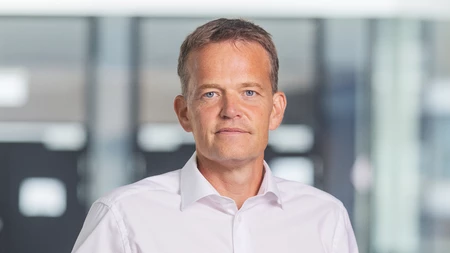
- Name:
- Jan Størup Nielsen
- Title:
- Chief Analyst, Nordea
Jan Størup Nielsen
Over the past ten years, the Danish labour market has undergone a remarkable development. The latest figures indicate that a soft landing has been achieved, with continued low unemployment at the same time as the balance between supply and demand for labour has improved.

Since the beginning of 2021, the number of employed has risen continually in the Danish labour market. During this period, the number of wage earners has risen by more than 250,000, corresponding to almost 10% growth. Employment both in the public and private sectors and across industries has risen.
The large increase in employment has only been possible thanks to a sharp rise in the number of foreigners in the labour market in the same period. Currently nearly 400,000 foreign citizens are employed in Den-mark, corresponding to about 13% of total employment. This is a doubling compared to ten years ago and has helped lift the workforce to a historically high level.
Also an increasingly higher proportion of Danish citizens have become active in the labour market. In the group aged 15-74 years, more than 82% are part of the labour force – up 5% points compared to ten years ago. The increase has especially been driven by rising la-bour force participation in the group of persons over the age of 60. This comes as a natural extension of the political decision to gradually raise the pensionable age in line with the expected rise in life expectancy.
The Danish labour market is characterised by high employment and continued low unemployment. The balance in the labour market has improved in recent years.
At the end of 2021, a historically high number of vacancies were registered. Back then, more than one in two companies in the construction sector indicated that labour shortage was a factor limiting production. The same applied to more than 40% of the companies in the industrial and services sectors. Subsequently, the number of vacancies has dropped by about a quarter and is now basically back at the pre-COVID-19 level. At the same time, fewer companies are reporting labour shortages.
In continuation of fewer vacancies, unemployment has risen slightly over the past years and is now currently 0.5% points above the level at the beginning of 2022. We expect this trend to continue, so registered unemployment will reach 100,000 full-time persons. In a historical perspective, it is still a relatively low level which is considered to be close to the neutral level.
The relationship between the development in the number of vacancies and unemployment can be illustrated by the Beveridge curve. The curve shows that over the past four years, unemployment has been reduced by about 2% points at the same time as the number of vacancies has been maintained at a largely unchanged level. This indicates great flexibility with only limited mismatch challenges at present.

A combination of high inflation and a tight labour market has given rise to a sharp increase in wage growth. In the private sector, wages have risen by around 4.5% over the past year. This is almost a doubling compared to the development up to the beginning of 2021. The increase implies that companies’ total wage costs have risen considerably. However, the development is not much different from that of our most important trading partners. Thus, it has not per se deteriorated companies’ competitiveness. We expect wage growth to slow down gradually over the coming years – both as a consequence of lower inflation and as a reaction to the improved balance in the labour market.
This article first appeared in the Nordea Economic Outlook: Precision Play, published on 9 September 2024. Read more from the latest Nordea Economic Outlook.


Sustainability
Amid geopolitical tensions and fractured global cooperation, Nordic companies are not retreating from their climate ambitions. Our Equities ESG Research team’s annual review shows stronger commitments and measurable progress on emissions reductions.
Read more
Sector insights
As Europe shifts towards strategic autonomy in critical resources, Nordic companies are uniquely positioned to lead. Learn how Nordic companies stand to gain in this new era of managed openness and resource security.
Read more
Open banking
The financial industry is right now in the middle of a paradigm shift as real-time payments become the norm rather than the exception. At the heart of this transformation are banking APIs (application programming interfaces) that enable instant, secure and programmable money movement.
Read more